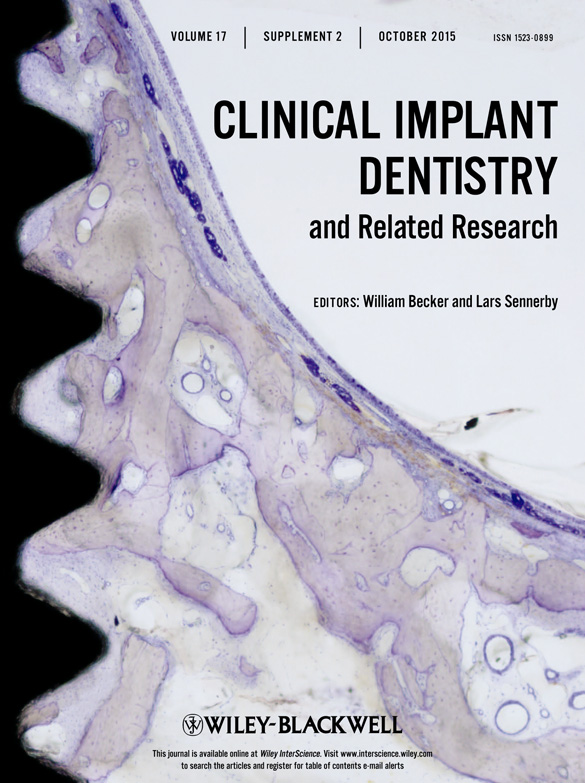Twelve-Year Retrospective Follow-Up of Machined Implants in the Posterior Maxilla: Radiographic and Peri-Implant Outcome
Abstract
Purpose
To retrospectively evaluate the survival rate of machined implants in sinus-lifted posterior maxilla after 12 years, with special reference to radiographic outcome and peri-implantitis.
Materials and Methods
From 37 possible candidates, 29 patients with 59 implants were evaluated. Implants were placed in the posterior maxilla in combination with a sinus elevation procedure (27 patients) or 6 months after sinus elevation (2 patients). Marginal bone level changes were radiographically evaluated at baseline and 1, 7, and 12 years post-loading. Probing depth was measured; presence/absence of plaque and bleeding on probing were recorded.
Results
Four out of 59 implants failed in 4 out of 29 patients (cumulative survival rate = 93.2%). The mean bone loss was 0.78 mm (± 0.88) after 12 years. Changes in the mean bone level were statistically significant between baseline and all the other follow-up intervals (p < .001). Statistically significant differences could be demonstrated for the first- to 12th-year interval (p < .05) and for the seventh- to 12th-year interval (p < 0.001). No statistically significant differences could be demonstrated at the first- to seventh-year interval (p = .32). The mean overall probing depth was 2.9 ± 0.66 mm. Probing depth was moderately correlated with the marginal bone changes at 7 year and after 12 year follow up (p = .05). No signs of peri-implantitis were reported during the 12-year follow-up period.
Conclusions
This follow-up demonstrates a very good prognosis when implants with machined surfaces are used. The frequencies of implant failures were very small. Within the limits of the results from this study, the risk of peri-implantitis in the posterior maxilla might be considered a minor problem when implants with machined surfaces are used.




